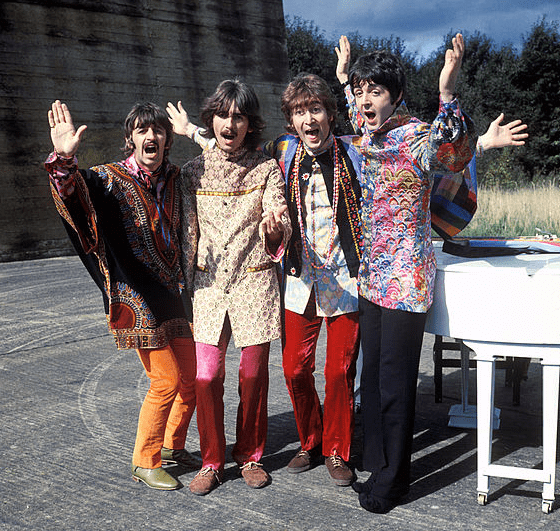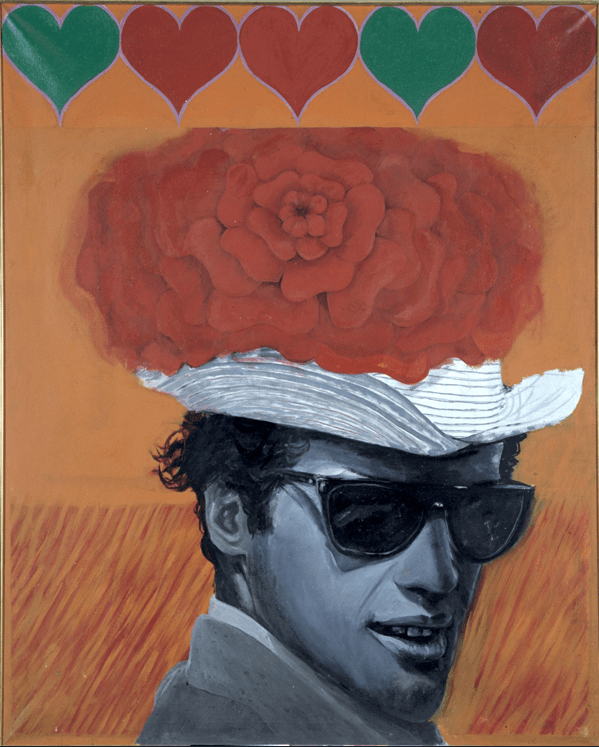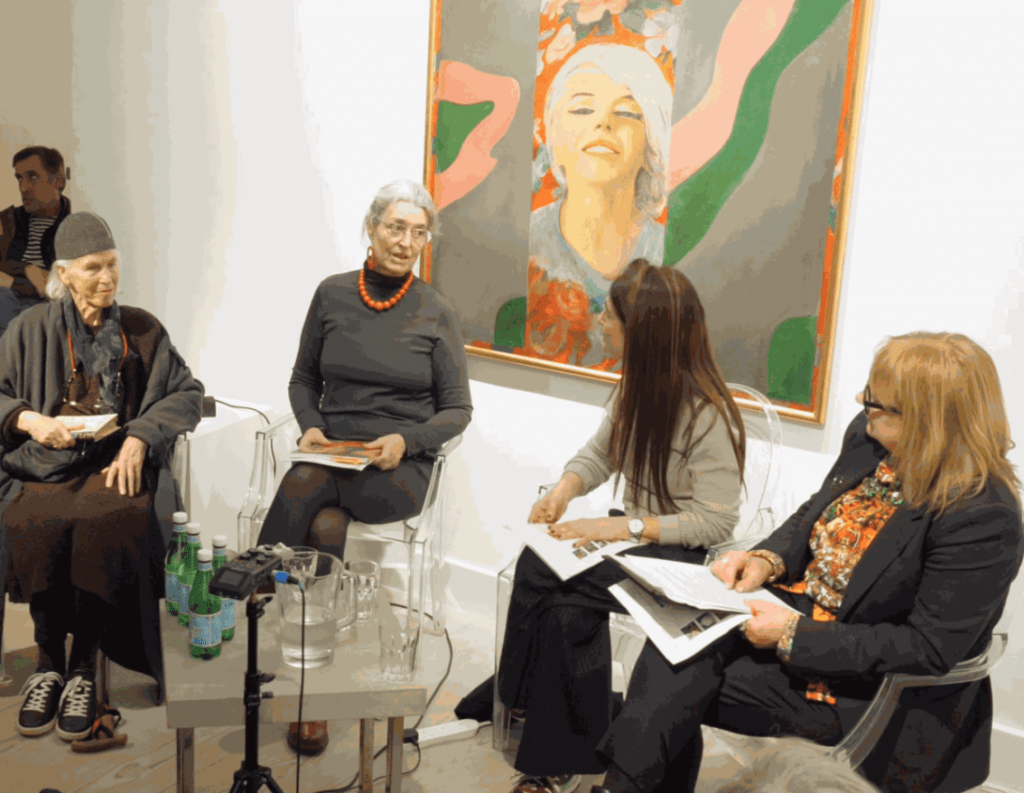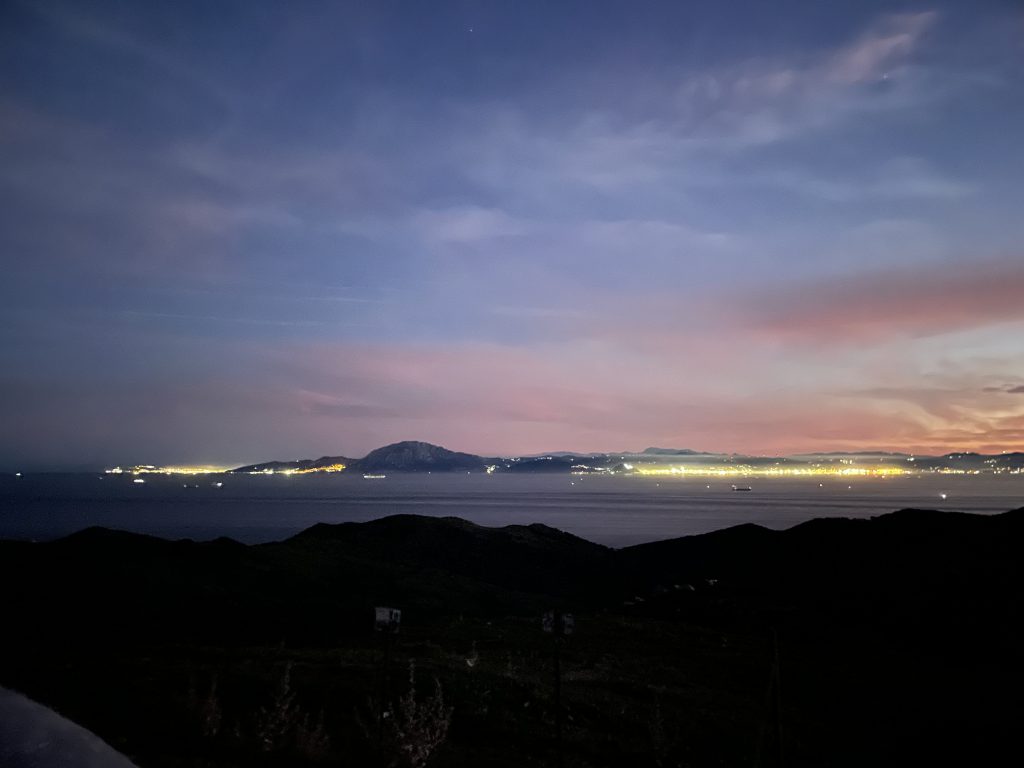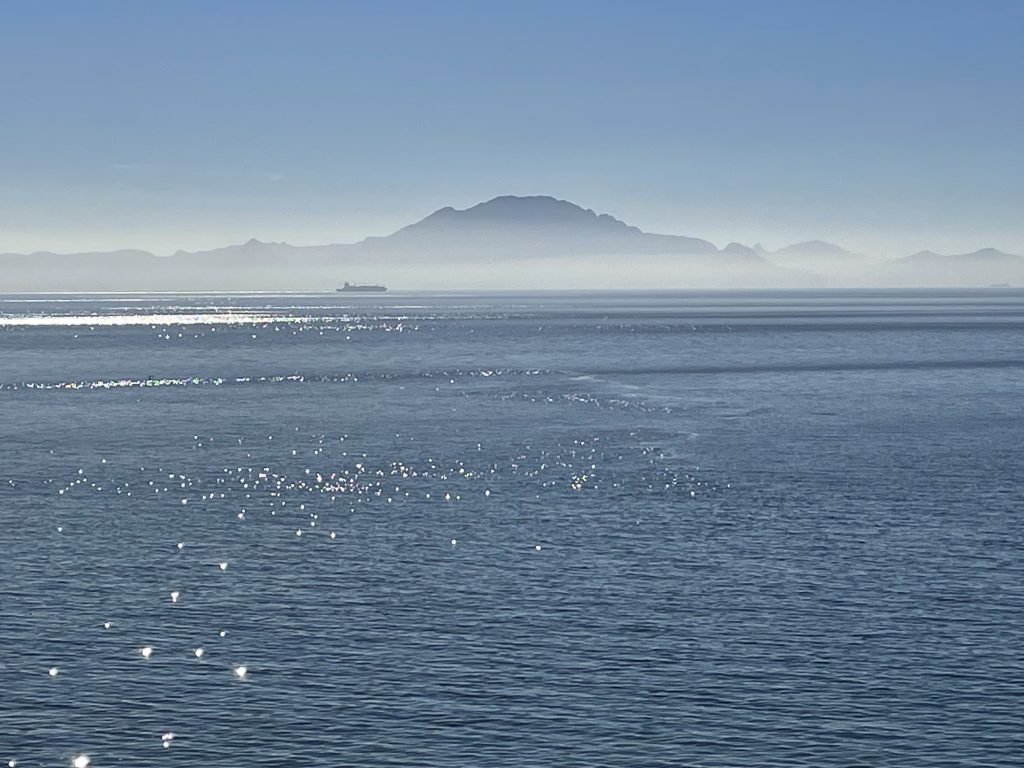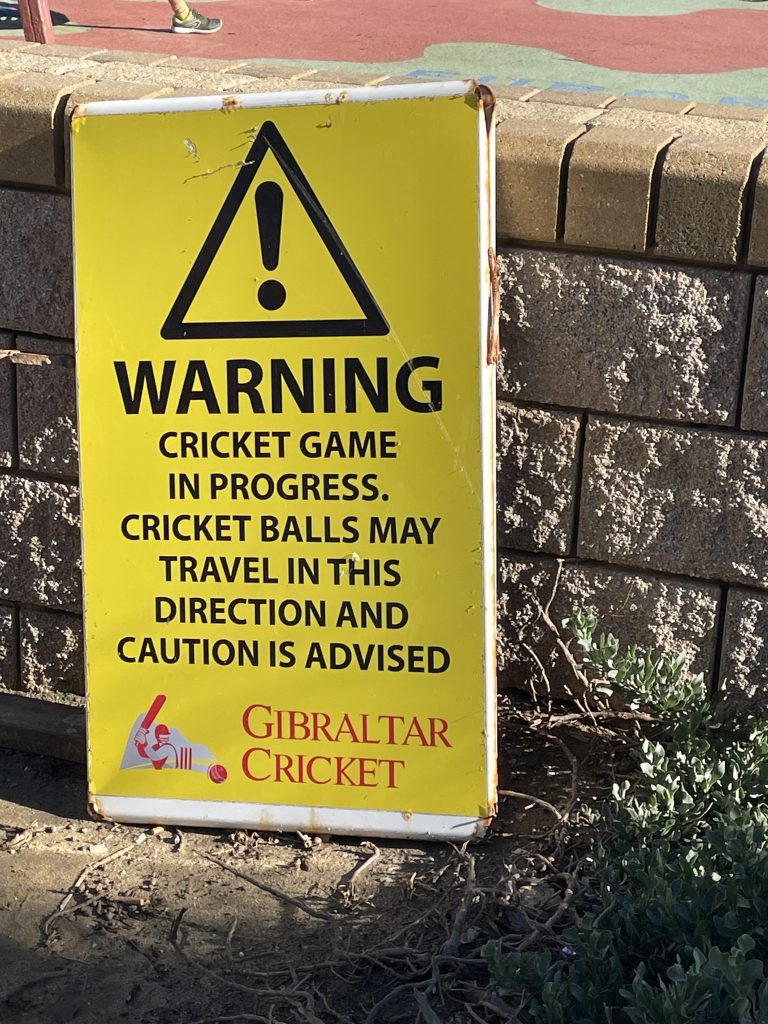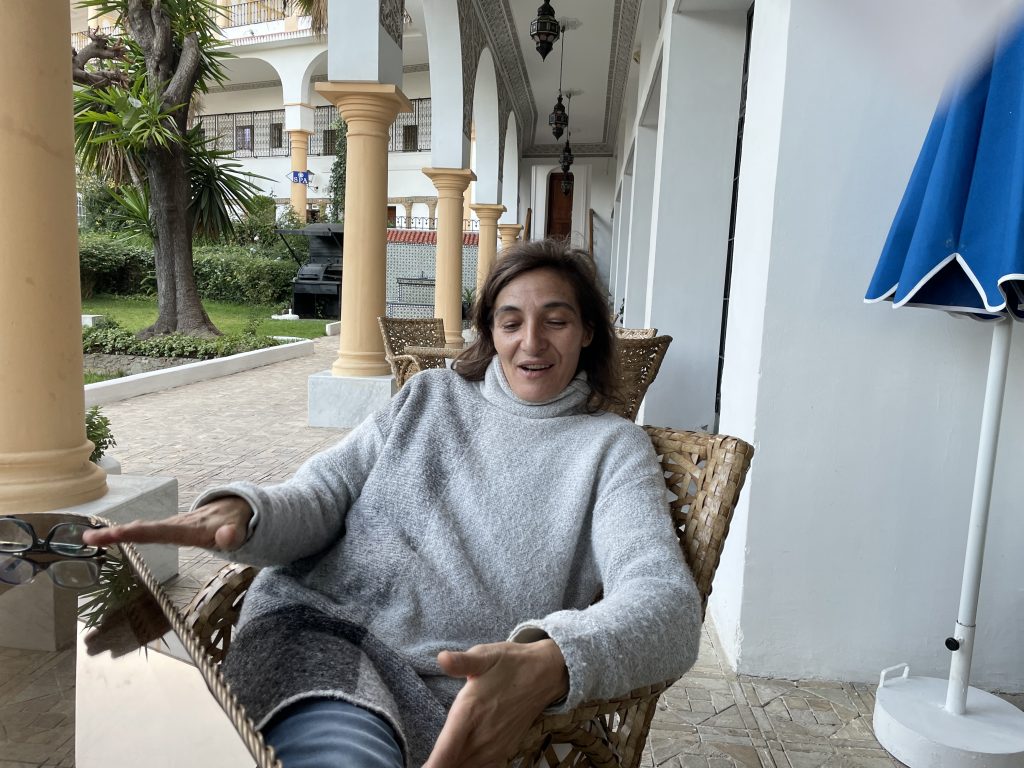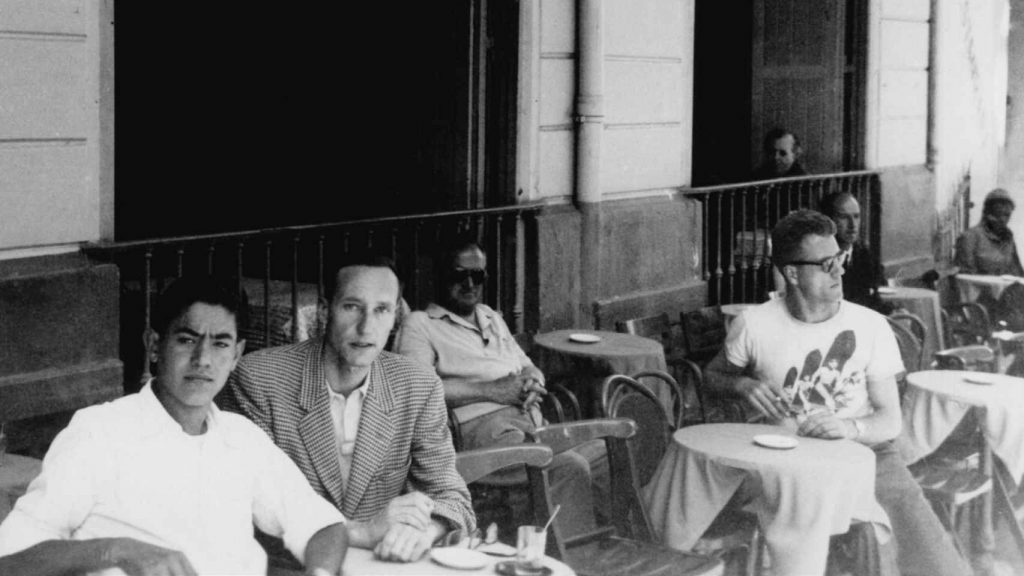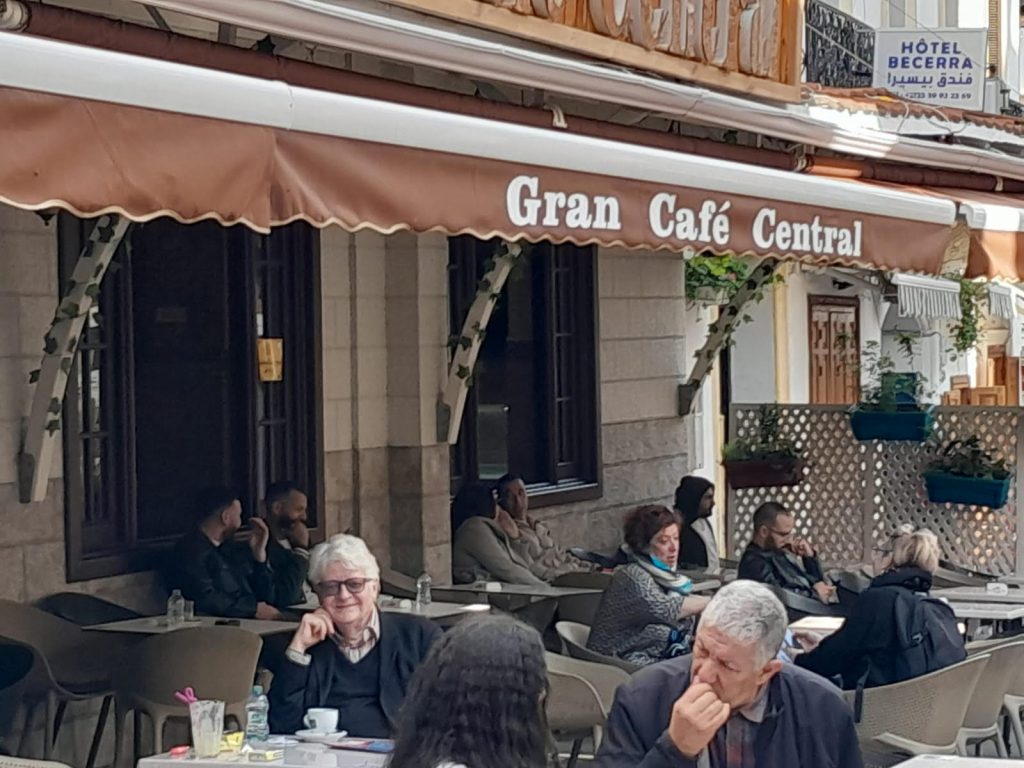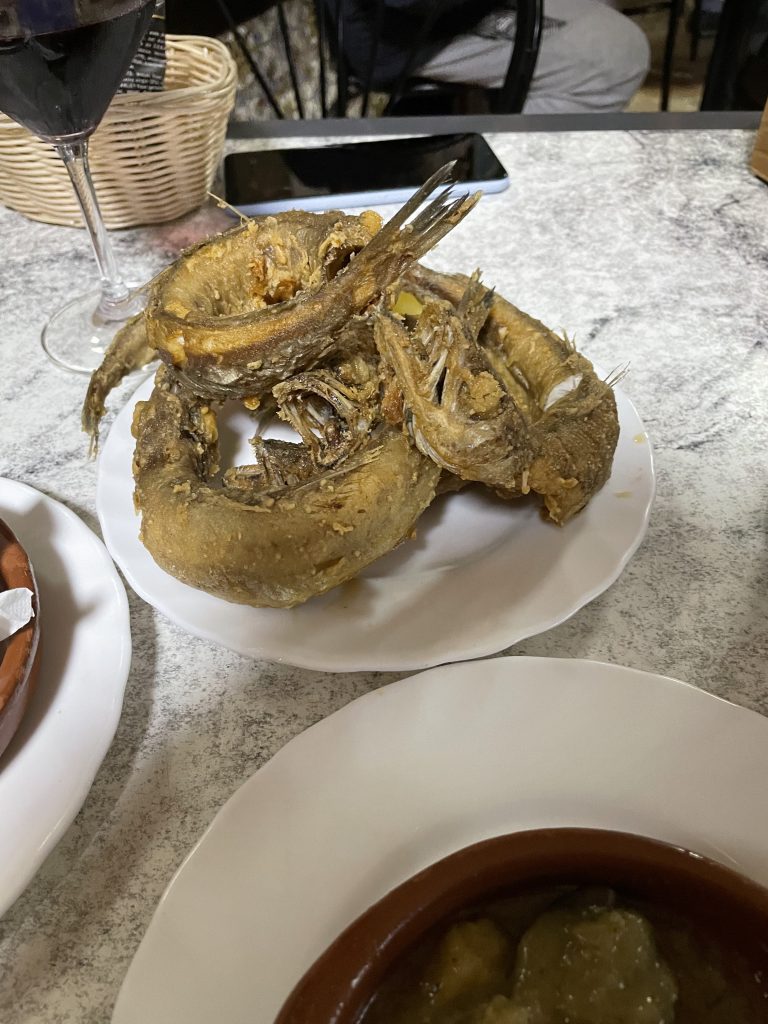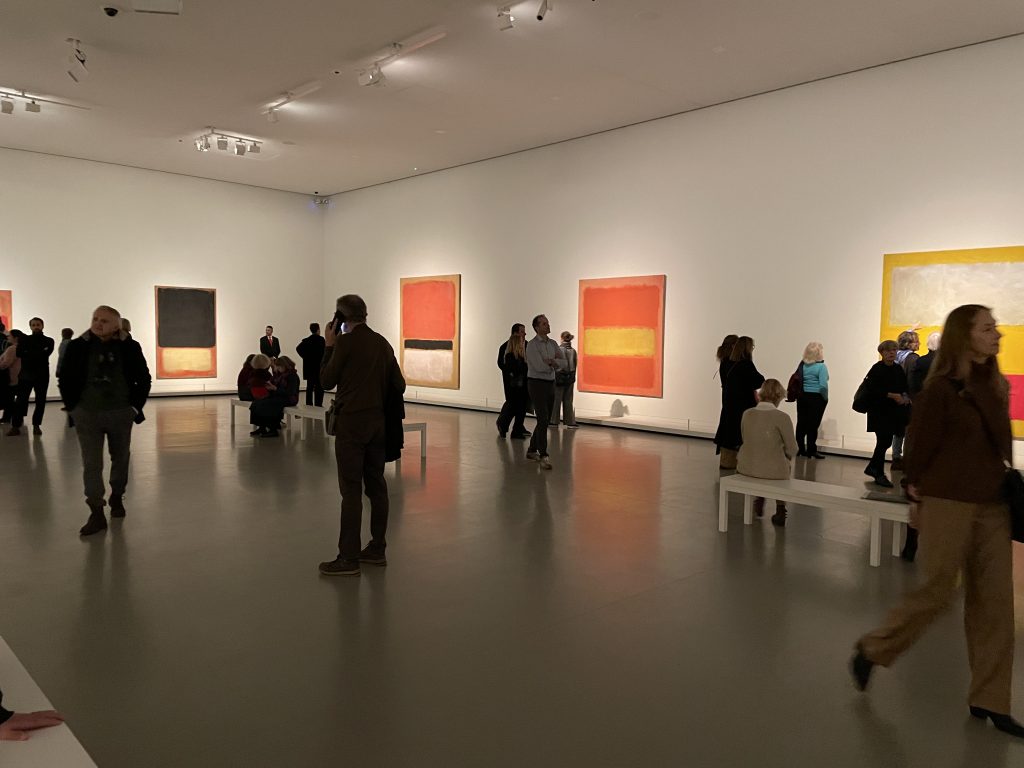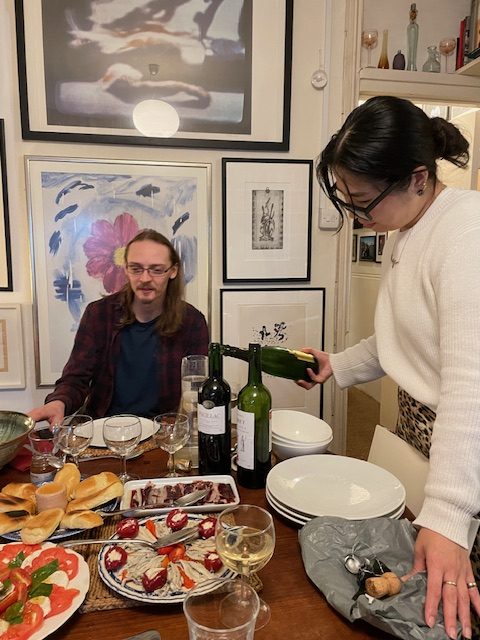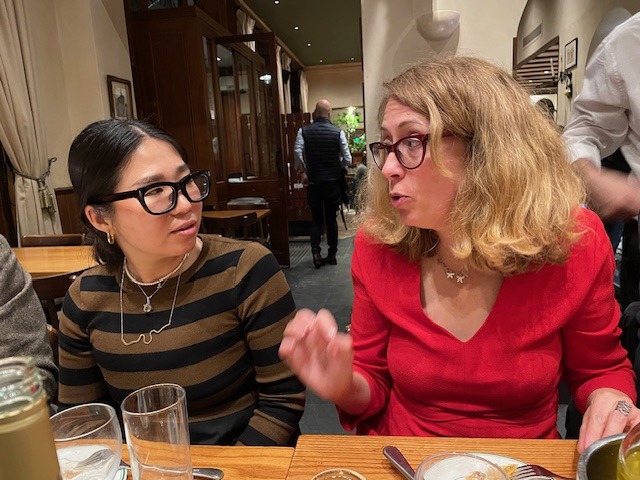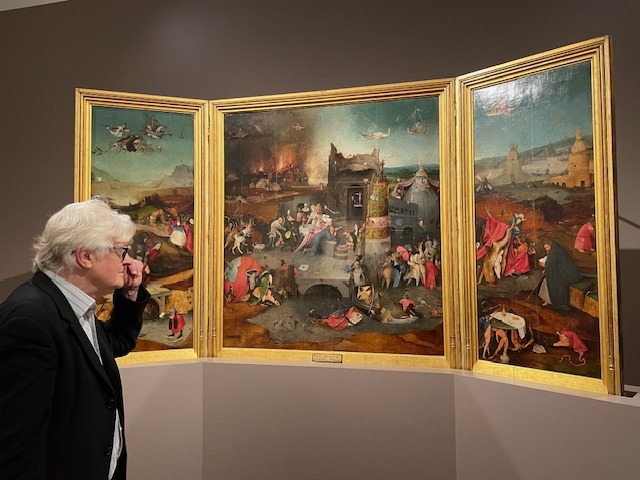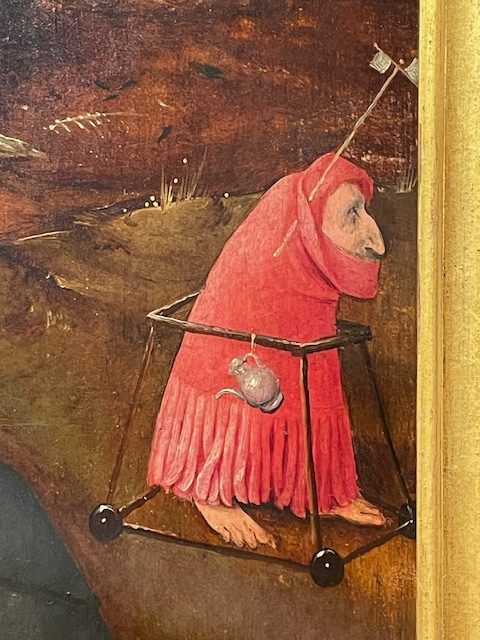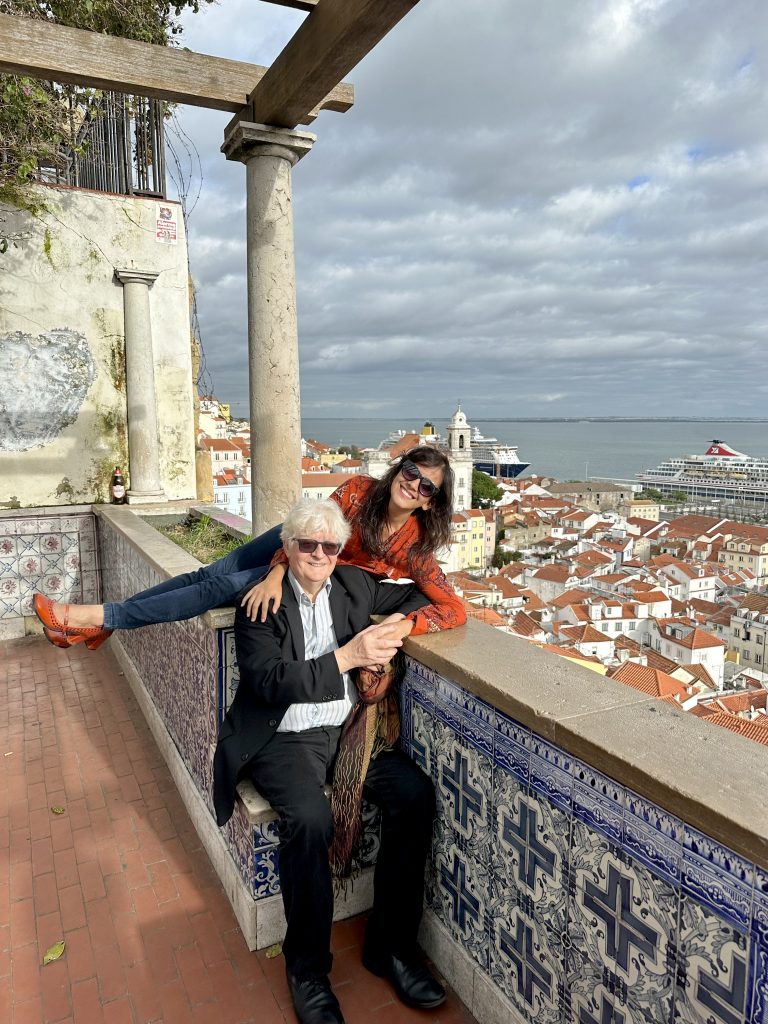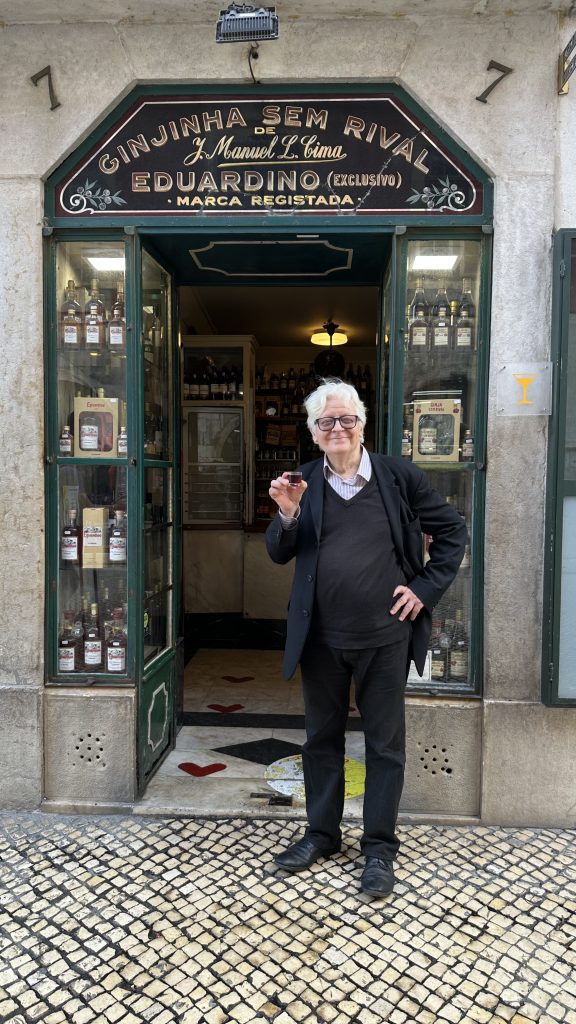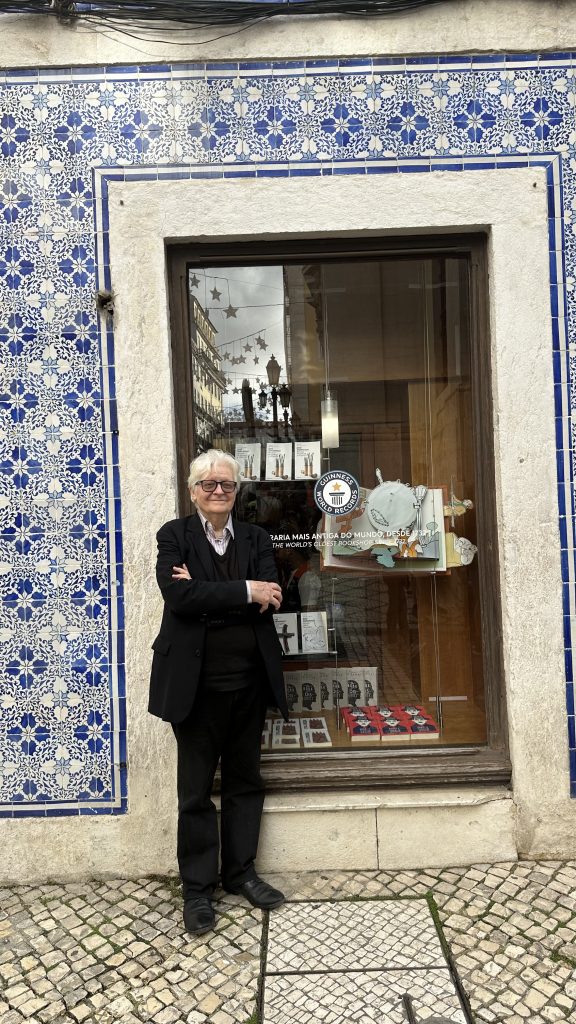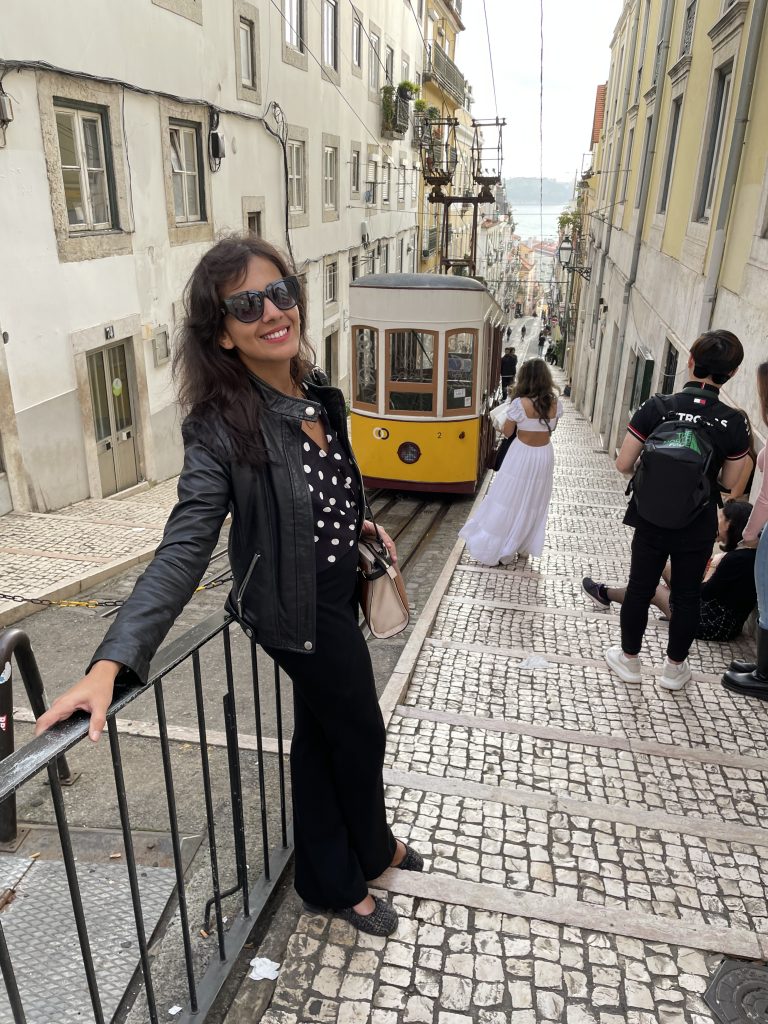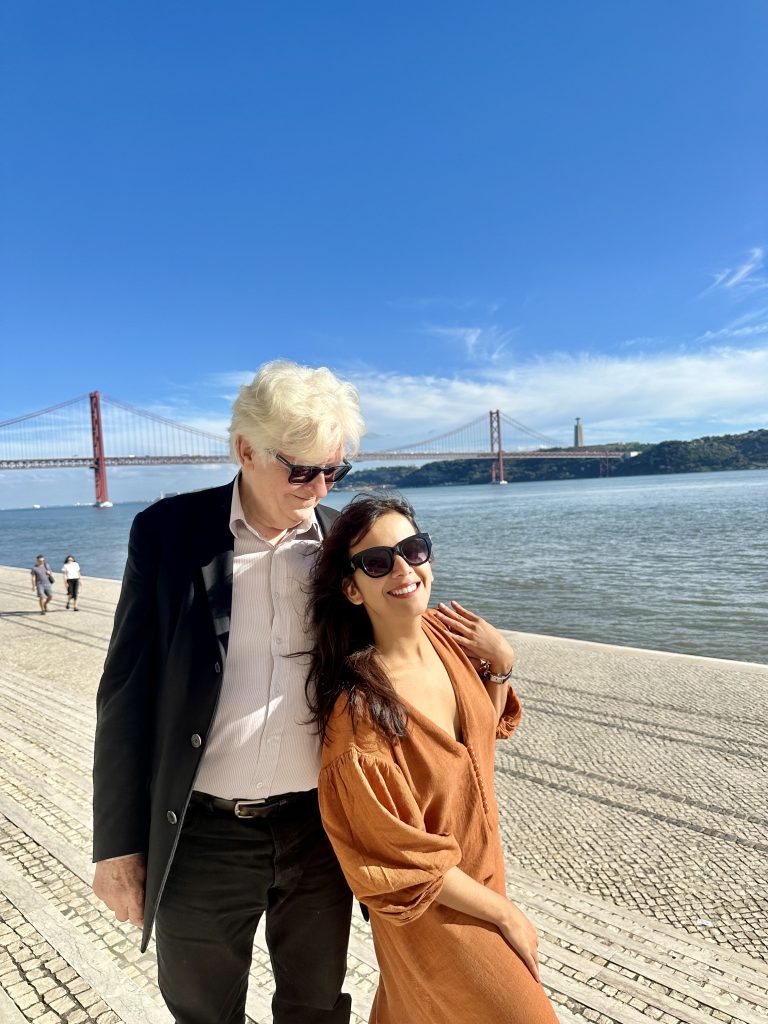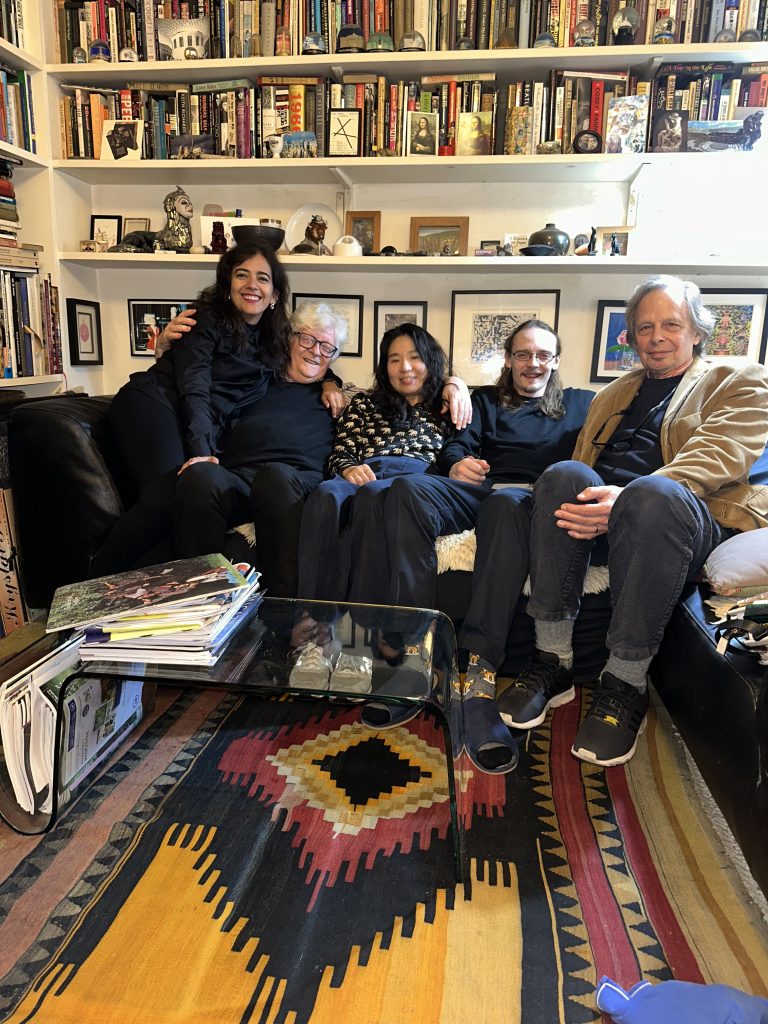Life has been little more than a succession of meals ever since I returned from Lisbon on April 5. Maribel came for dinner and two days later I cooked bacalao for Jill. Before that we saw the Angela Kauffman show but we were not impressed. Next day I had lunch with my old friend Hazel at the Academy Club. Sadly, she lives out of town, so I hardly ever see her. Here’s Maribel, preparing to leave Blighty.

Luzius Martin flew into town from Basel for his bi-monthly visit and we finalised the book we have been working on for a while. Back in 1973 I published A Catalogue of the William S. Burroughs Archive, listing everything that was in Burroughs’ flat in London and everything we could find in storage in New York and Paris. Even before it was published, more material came to light in New York and Athens and I catalogued it using the same system that the original inventory had used, as suggested by Ken Lohf at the Butler Library of Columbia University who had originally expected to buy it.
The folders were numbered and I continued the numbering system from where it left off. Well, the sale was stymied, and the collection disappeared into private ownership for decades before finally being sold to the Berg Collection at New York Public Library. In the meantime, all the new material that came to light was sold off with no copies being made and no record kept of where it went, leaving behind various lists, inventories, and archive descriptions. Luzius Martin and I have collected as many of these as possible and have assembled them to create A Catalogue of the William S. Burroughs Archive, Volume Two. This is intended as a guide for future bibliographers, biographers, and researchers into Burroughs’ work, as it is hoped that one day, in the future, all these texts will be collected and digitised. But to collect them, you must know what you are looking for which is the purpose of this book. Most of the work has been done by Luzius, who is a Burroughs collector, but I have written introductory texts to the different sections. It has been fun, and it keeps me off the streets.
Luzius, Terry Wilson and I had lunch with Tom Neurath at Maramia, a Palestinian restaurant close to Tom’s office in Golborne Road, Notting Hill. (highly recommended!) Tom is one of the few people I know who actually lived at the Beat Hotel in the fifties. I didn’t meet him until the sixties through our mutual friend Ian Sommerville. In a blog entry from years past I described a visit we made to ZKM in Karlsruhe to give a talk on ‘Swinging London’ of all things. The next day I cooked for Luzius and Terry.

Helen Mitsios and her partner, the painter Tony Winter came to dinner. I’ve known Helen since the early eighties when she was living with Steve Mass, the manager/co-owner of the Mudd Club when Rosemary and I were living in New York. We had not seen each other for about a decade so it was a great reunion. I had to cook veggie, something I’m not used to as my main cuisine is French where they regard vegetables as ‘garnish’. But it worked out.
Marsha Rowe came up from Norwich and we saw ‘The Martyrdom of Saint Ursula’: the ‘Last Caravaggio’ at the National. I can’t say it is his greatest work, but as it normally lives in a convent outside Naples, it might have been the only chance I’d ever have to see it. When Camila and I were in Naples in February we saw ‘The Seven Works of Mercy’ [1607] in the Pio Monte della Misericordia; to me, a much more significant work, in fact, a picture that you could spend hours examining as the eye moves through the painting’s ever-changing dynamic. (See the blog for February). We had a nice lunch at Zédel followed by a few drinks at the French House.

On May Day I had lunch with my old friend Andrew Sclanders, the rare book dealer. This is always a pleasant affair and I wish we did it more often. Friday the third was a cultural day. I met Suzy Treister and Richard Grayson at Raven Row on Artillery Lane in E1, where Alex Sainsbury was putting on a show of Brazilian art from the 1950s-70s. I was unfamiliar with most of the work but loved the four small formal abstracts by Lygia Clark from 1958. John Dunbar showed her work at the Indica Gallery back in the sixties and I very much enjoyed it then. The other outstanding work was by Hélio Oiticica whom I came to late in life, introduced by Hannah Watson at her T. J. Boulting Gallery though I seem to remember Guy Brett extolling his work some decades ago. We went for a drink with Alex Sainsbury who always has good stories. Here are two of Lygia’s pictures:


And here is Suzy disrupting the gallery calm, and one of Richard, Alex and Suzy after seeing the Brazil show.



At Suzy and Richard’s place, overlooking Parliament Hill Fields, Patricia Bickers and Simon Patterson joined us for dinner and Richard excelled himself in the kitchen. I stayed overnight and the next morning was able to get a wild rabbit at the Farmer’s Market. This I cooked with a farmed rabbit and a pig’s trotter or two for Valerie Orpen and Maribel Torrente, two of my best friends. They had not previously met and it was wonderful to see them together. I knew that Valerie liked the rabbit’s head, as I have cooked it for her before, and Maribel is Spanish where rabbit is a proper part of the cuisine. Sadly Maribel is now back in Spain after about a decade here in London. In the end the terrible food and lack of sun sent her back to her beloved Andalucía where she has bought a house. I stayed with her there in December and envy her the enormous beaches with a distant view of Morocco over the Strait as the sun sets over the Mediterranean. I shall have to visit. Valerie is also away, but just on holiday in South Korea – as you do. Spring does seem to have arrived. Here’s the view from the breakfast table at Richard and Suzy’s. Could almost be Continental.



















































































